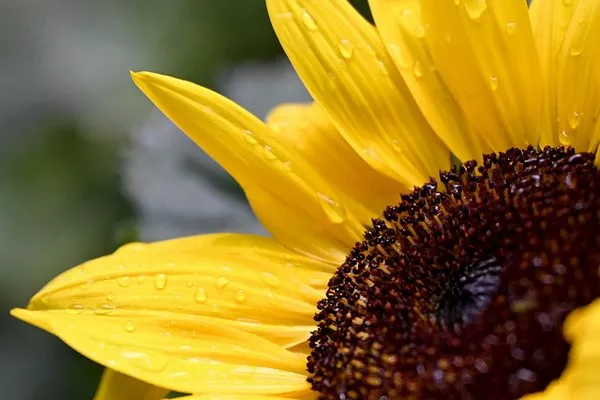Mammoth sunflowers (Helianthus annuus) are not just towering giants in the garden; they are emblematic of warmth, cheer, and the essence of summertime. With their impressive height and bright, expansive blooms, these sunflowers can transform any garden into a vibrant display of nature’s splendor. Planting mammoth sunflower seeds is a gratifying experience that requires attention to detail and a few essential steps to ensure a successful harvest. In this comprehensive guide, we will explore the key elements of planting mammoth sunflower seeds to help you cultivate these majestic giants in your own garden.
Choosing the Right Seeds
Selecting the right seeds is the first crucial step in the journey of planting mammoth sunflowers. When purchasing seeds, ensure they are of high quality and from a reputable supplier. Look for mammoth sunflower varieties known for their towering height, robust stems, and large, radiant blooms. Varieties like ‘Mammoth Russian’ or ‘Giganteus’ are popular choices for their impressive size and vibrant flowers.
Timing and Location
Timing is essential when planting mammoth sunflower seeds. These sunflowers thrive in warm weather, so it’s crucial to plant the seeds after the last frost date in your region. This ensures that the soil is warm enough to promote germination and sturdy seedling growth.
Choose a location in your garden that receives full sunlight for at least six to eight hours a day. Mammoth sunflowers are sun-loving plants and need ample sunlight to reach their full potential. Additionally, select a spot with well-draining soil to prevent waterlogging, as these plants prefer slightly moist but not waterlogged conditions.
Soil Preparation
Prepare the soil in advance to create an ideal environment for mammoth sunflowers to flourish. Sunflowers prefer loamy, well-draining soil with a slightly acidic to neutral pH. Incorporate organic matter, such as compost or well-rotted manure, into the soil to enhance its fertility and structure.
Before planting, loosen the soil to a depth of about 12 to 18 inches using a garden fork or tiller. This helps the sunflower roots penetrate the soil easily, promoting healthier and more robust growth.
Planting Mammoth Sunflower Seeds
Once the soil is prepared, it’s time to plant the mammoth sunflower seeds. Follow these steps for a successful planting process:
Seed Spacing: Space the mammoth sunflower seeds at least 18 to 24 inches apart. These sunflowers need ample room to grow, and proper spacing prevents overcrowding, which can lead to stunted growth.
Seed Depth: Plant the seeds at a depth of 1 to 1.5 inches. Cover the seeds with soil and gently pat it down to ensure good seed-to-soil contact.
Watering: After planting, water the area thoroughly. Keep the soil consistently moist but not waterlogged until the seeds germinate. Once the seedlings emerge, gradually reduce the frequency of watering, allowing the soil to dry slightly between watering sessions.
Mulching: Apply a layer of mulch around the sunflower seeds to conserve moisture, suppress weeds, and regulate soil temperature. Organic mulches like straw or shredded leaves work well for this purpose.
Supporting Your Sunflowers
As mammoth sunflowers grow, their height can pose a challenge, especially in windy conditions. Providing proper support ensures that these towering beauties stand tall and strong. Here are some tips for supporting your mammoth sunflowers:
Staking: Install sturdy stakes around the sunflowers, securing them with soft ties or twine as the plants grow. This helps prevent the stems from bending or breaking, especially during strong winds.
Windbreaks: If your garden is exposed to strong winds, consider planting smaller, sturdy plants around the sunflowers to act as natural windbreaks. This can provide additional support and protection to the towering sunflower stems.
Maintenance and Care
To ensure your mammoth sunflowers reach their full potential, regular maintenance and care are essential. Here are some key aspects to consider:
Fertilization: Mammoth sunflowers benefit from a balanced, all-purpose fertilizer applied during the growing season. Follow the package instructions for the appropriate application rate, and avoid over-fertilizing, as this can lead to excessive foliage growth at the expense of flower development.
Deadheading: Remove spent blooms regularly to encourage continuous flower production. Deadheading redirects the plant’s energy from seed production back into new flower development.
Pest and Disease Management: Keep an eye out for common garden pests like aphids and caterpillars, as well as signs of diseases such as powdery mildew. Treat any issues promptly using organic or chemical controls as needed.
See Also: What Is The Flower For The Month Of December?
Harvesting Mammoth Sunflowers
The moment of truth arrives when the mammoth sunflowers reach their full glory, displaying their impressive blooms and towering stature. Harvesting these sunflowers is a rewarding experience, and here’s how to do it:
Timing: Choose the right time to harvest when the sunflowers are in full bloom. The petals should be open, and the center disc should be filled with mature seeds.
Harvesting: Use sharp scissors or pruners to cut the sunflower stems just below the flower head. Leave a portion of the stem attached, as this makes it easier to handle during drying and saves space when storing.
Drying: Hang the harvested sunflowers upside down in a dry, well-ventilated area. Ensure that the seeds are fully dry before storing them to prevent mold or mildew growth.
Conclusion
Planting mammoth sunflower seeds is a gratifying endeavor that allows you to witness the beauty and grandeur of these towering giants in your own garden. By following the steps outlined in this comprehensive guide, you can create an ideal environment for mammoth sunflowers to thrive, from seed selection to harvesting. With proper care and attention, your garden can become a breathtaking showcase of nature’s brilliance, courtesy of the majestic mammoth sunflowers.


